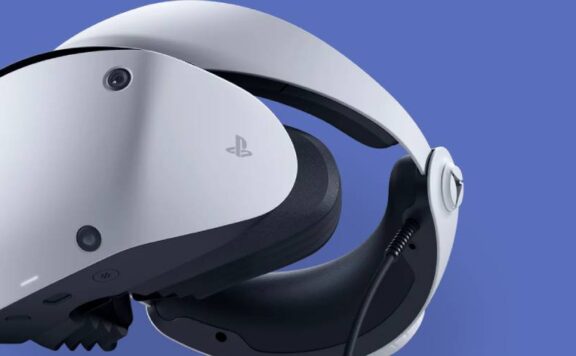Despite its name, Symphony of the Machine is a game of nature and the elements. A virtual reality puzzler, you’re tasked with restoring life to the dusty brown planet below, manipulating the weather to meet the demands of various plant bulbs and help them to flourish in this desolate land.
At the top of this rather Breath of the Wild-esque tower is an energy beam that you need to manipulate and redirect to power and bring forth the sun, wind, clouds and rain . It’s a simple task to start with, as you’re given a mirror to reflect the beam in a new direction, placing it where you like and leaving it to float perfectly still in midair, however it’s soon complicated by splitters and modifiers later on.
Without a single spoken word in the game, you’re often trying to decipher the iconography that’s used to say what a given plant needs in order to grow. The sun peeking out from behind a cloud is rather self explanatory, but I liked the way that the combinations played to common knowledge and logic for creating a rainbow or a thunderstorm.
As you add elements, tweak the puzzles to meet the goals, the game’s soundtrack waxes and wanes accordingly, adding different lines to the atmospheric music in the background. It’s not the most engaging and emotive of soundtracks, but it does add a pleasant additional layer to the game as you play.

Powering a particular element throws up literal barriers to your progress, creating an energy shield that forces you to plan and redirect the beams. You can move around the top of the tower, pressing the Move button, pointing to a spot and pulling the trigger to teleport there, and this gives you freedom to circumvent the obstacles in your path, coming up with some rather ungainly, but effective solutions.
I never felt truly comfortable with my position in the world, always either too close or too far away to the elements I was trying to manipulate, and I was constantly finding myself having to move back and forth or use the buttons to turn left or right. Some way to move in an analogue fashion wouldn’t have gone amiss – Sports Bar VR’s rowing-like movement, for example, and it should be noted this may be less of an issue in HTC Vive’s room-scale VR. I initially started playing while sat down, but soon found myself feeling restricted in my ability to really interact in this 3D world. Playing stood up is a much better experience, but still never felt ideal.
The little floating robot companion that watches over you and assists has all the right things to make it an adorable companion. A little floating metallic ring with a bulbous camera lens that invariably points towards you, it’s leant just a smidgeon of personality with a pair of ear-like antennae that wiggle back and forth. That and its ceaseless bleeping, blooping and chirping. I named it ‘Bleep’ for reasons beyond its appearance.

It’s cute, but it also serves to exacerbate some of my minor annoyances with Symphony’s interface. Bleep shuttles back and forth from a dispenser unit, bringing new items like beam splitters or a fresh pot and plant bulb to you, it can also be used to put items in and bring them to where you teleport to. However, it has a mind of its own, either deciding that it couldn’t get past some other object floating around near me, or with its contents often rather difficult to grab and just a shade out of range of my Move controllers. I’d often grab Bleep itself, while cursing at it, just to get whatever it was carrying for me.
It’s these niggles and annoyances with interactions that left me most disappointed, but this is also not a particularly long game. Each of the seven plants has three stages of growth that need to be triggered, and I was able to easily overcome them in around an hour, with little real reason to go back for more. In fact, the game just kind of ended and petered out, with Bleep taking me back down to the base of the tower, showing that water was now flowing and the first few plants growing. It took a while for me to spot and realise that the credits were rolling on one side of the elevator.
What’s Good:
- Laser puzzles work well in VR
- Decoding which elements to combine
- Requires you to move around the area to solve puzzles
What’s Bad:
- Frustrating to teleport around (in PSVR)
- Robot companion can be annoyingly out of reach
- Rather short
Symphony of the Machine is a pleasant enough puzzle game, with its laser beam manipulation requiring a little out of the box thinking at times. However, it’s a concept that we’ve seen before in VR, and niggles with moving around and interacting with this 3D space left me feeling a tad frustrated and disappointed.
Score: 6/10
Version tested: PlayStation VR



